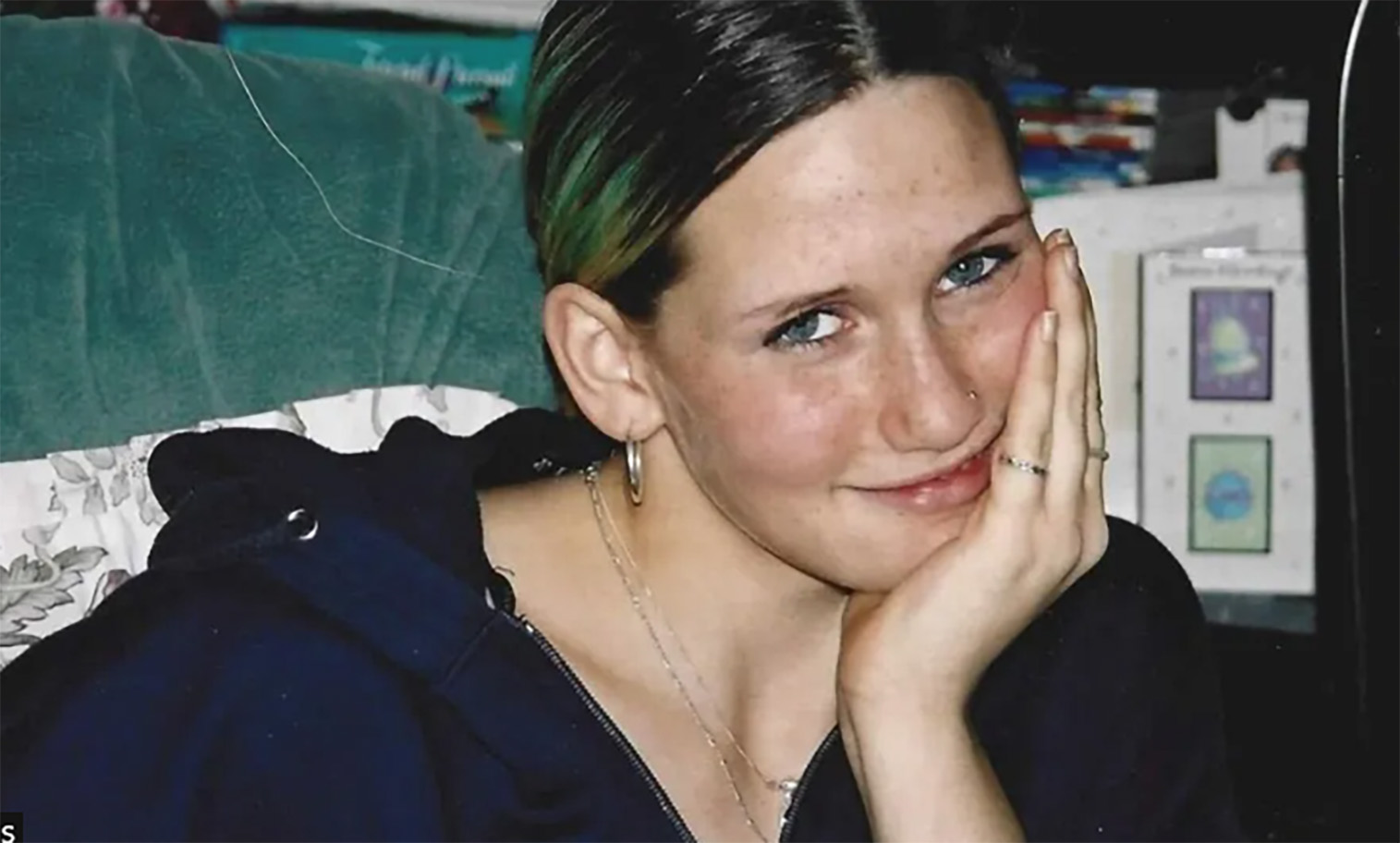Health & fitness
Are you one of the 38,000 living with silent heart condition that nearly killed footballer Fabrice Muamba?

TENS of thousands of Brits are estimated to be unknowingly living with the silent heart condition that nearly killed footballer Fabrice Muamba.
More than 38,000 people are thought to have undiagnosed hypertrophic cardiomyopathy.
The illness causes the walls of the heart to thicken, reducing its ability to pump blood, but often has no symptoms.
Many people do not find out they have it until they have a sudden cardiac arrest or stroke as a result of it.
Fabrice Muamba collapsed on the pitch while playing for Bolton Wanderers in 2012, aged just 23.
His heart stopped due to a cardiac arrest triggered by hypertrophic cardiomyopathy but he was saved by quick-thinking medics at the pitchside.
Read more on heart health
Channel 4 news reader Krishnan Guru-Murthy also has the condition.
One in 500 people in the UK are estimated to have the condition but 64 per cent are unaware, according to analysis by pharmaceutical firm Bristol Myers Squibb.
It has launched a campaign “Could it be HCM?” to teach people the signs.
Symptoms can overlap with those of other conditions, or be attributed to ageing or being out of shape
Professor Perry Elliott
Early symptoms can include regularly feeling breathless, dizzy or very tired, or having heart palpitations.
Professor Perry Elliott, heart scientist at University College London, said: “People with HCM often complain of non-specific symptoms, which can overlap with those of other conditions.
“Some patients attribute their symptoms to ageing or being out of shape.
“Failure to recognise the symptoms of a potential heart problem can have a serious impact on time to diagnosis, which in turn has been linked to poorer outcomes.”
Muamba had been a super-fit elite athlete before being struck down by his heart condition.
Often it is genetic, meaning it begins at birth, but in some people it can develop over time. Scientists are not entirely sure why.
The midfielder’s heart stopped for 78 minutes before he could be fully resuscitated.
He has since made a full recovery but retired from professional football shortly after the incident.
Hypertrophic cardiomyopathy cannot be cured but it can be controlled and steps taken to reduce the risk of a serious heart event.
Patients may be given medicine to control their blood pressure, fitted with a pacemaker or have surgery.
Joel Rose, chief of Cardiomyopathy UK commented: “We hope that this campaign will enable those experiencing symptoms to access the support they need.”
WHAT IS HYPERTROPHIC CARDIOMYOPATHY?
HYPERTROPHIC cardiomyopathy is a serious heart condition in which part of the muscle wall is thicker than it should be.
This means it does not function normally and has a reduced capacity to pump blood.
It raises the risk that someone will develop an irregular heartbeat or heart failure, or have a sudden stroke or cardiac arrest.
One in every 500 people in the UK is estimated to have it, but more than half are unaware of it.
It is deadly because people often do not know they have it until they suffer a serious event like a cardiac arrest.
Most cases are genetic, meaning they are present from birth and can affect young and otherwise fit and healthy people.
Symptoms something might be wrong can include:
- Dizziness
- Extreme tiredness
- Getting out of breath easily
- Chest pain
- Heart palpitations
HCM is usually diagnosed with an ECG heart scan to detect any irregularities.
It cannot be cured but the risks can be managed with medication, a pacemaker or surgery.
Many people live normal lives and are still able to exercise and work as normal, although there is a risk of the condition getting worse over time.
Womens Workouts
30 Min ALL STANDING CARDIO ABS Workout🔥 | Lose Belly Fat, High Intensity, No Repeat

This is a really effective standing abs workout to burn lots of calories and define yous abs. Remember to squeeze your muscle while exercising! Let’s do this! #nojumpingworkout #allstanding
❀Full Body Workout
❀Time: 40 sec on/ 10 sec rest
Calorie Burn 250 – 350 Cal
Warm Up 00:00 – 03:12
Workout 03:12 – 31:35
Cool Down 31:35 – 34:58
*The number of calories you burn will vary from person to person depending on your body composition, workout intensity and also fitness level but this might serve as a guideline.
❀ Don’t forget to Subscribe and turn on notifications so that you don’t miss any Workouts, Community Updates or Surprises:
https://www.youtube.com/channel/UC6TSBn2RAx036n04GaN6McA
❀Join the Community:
Fitness Channel
Instagram: http://instagram.com/eleni.fit_
❀ My Supplements: ESN (Code: “ELENI”)
❀ My Amazon Storefront: https://www.amazon.de/shop/elenifit
❀ Music: https://www.epidemicsound.com
DISCLAIMER
If you are new to exercise, you should understand that there is the possibility of physical injury. Please notice that if you performing any exercise or program, you agree that you do so at your own risk. This channel offers health, fitness and nutritional information and is not intended to be a substitute for professional medical advice, diagnosis or treatment.
source
Health & fitness
Children at greater risk of silent killer after catching Covid, scientists warn – as cases of XEC strain rise

KIDS are at risk of developing type 2 diabetes after Covid-19, more so than any other common cold bug.
The findings come as the UK faces a rise in Covid cases, with one in 10 in England and Wales caused by the new XEC strain.
There is no evidence so far the strain is more deadly, but data from the UK Health Security Agency (UKHSA) shows Covid hospital admissions are rising in England.
Researchers studied more than 600,000 children in the US aged between 10 and 19 years old who had either had Covid-19 or another respiratory infection in the first three years of the pandemic.
The risk of a new diagnosis of type 2 diabetes was significantly higher in the Covid-19 group from one month after infection.
They had around a 50 per cent higher chance of diagnosis one to three months after infection, jumping to 58 per cent at six months.
Read more on Covid and bugs
The risk doubled in children classed as overweight or obese, according to the findings published in the journal JAMA Network Open.
Whether the odds of a new diagnosis persist for longer than six months was not studied by the team at Case Western Reserve University School of Medicine, Ohio.
The researchers said type 2 diabetes was already reported as increasing among children – largely due to the obesity epidemic.
Parents have also anecdotally talked of their suspicions that their children’s brush with Covid let to their type 2 diabetes developing.
Type 2 diabetes is often referred to as a ‘silent killer’ because symptoms – such as going to the toilet more often or feeling tired – can often be assumed as common ailments.
It does not directly kill those who have it but can lead to conditions such as heart disease and stroke, as well as problems with vision, kidneys, and nerve damage.
More often than not, the condition is triggered by poor lifestyle habits like eating too much unhealthy food or not exercising.
Several research teams have shown that adults face an increased risk of diabetes diagnosis after contracting Covid-19.
For example, Canadian scientists said that those who have had Covid are more likely to develop new-onset type 2 diabetes.
However, a study of Brits by King’s College London suggested that after three months, the risk declined back to baseline levels.
Diabetes diagnoses were increased by 81 per cent in acute Covid-19 and remained elevated by 27 per cent from four to 12 weeks after infection, according to findings published in PLOS Medicine.
The researchers couldn’t say whether the short-term increase in risk is directly because of Covid infection or if there were undiagnosed cases among those who had Covid.
It comes as research last week suggested Covid “doubles risk of heart attack, stroke or dying up to three years later”.
Data from more than 10,000 Brits aged over 50 years revealed the danger is even higher among people with blood types A, B or AB compared to those with type O.
None of the participants were vaccinated at the time of infection because Covid-19 jabs were not yet available.
How can you prevent your child developing type 2 diabetes?
Factors such as ethnicity can increase the risk of type 2 diabetes.
But living with obesity and overweight is thought to be behind the rising number of children with type 2., says Diabetes UK.
If your child is very overweight, the NHS says there are things you can to help them get to a healthy weight.
This includes upping exercise, keeping portions to child-sized, and eating healthier foods.
Exercise doesn’t need to be any more than playing “it”, riding a bike, swimming or using a playground, so long as they are happy and moving.
“All children need about 60 minutes of physical activity a day for good health, but it doesn’t need to be all at once,” the NHS says.
Food wise, children should avoid eating too much of the same things that cause weight gain in adults – sweets, chocolate, crisps and cakes.
It’s important that as a parent, you also act as a good role model and try and get the whole family involved, so it doesn’t feel like your child is targeted.
It can be a scary time if your child is diagnosed with diabetes, but doctors will be there to support you.
Your child will get a treatment plan that you as a parent will be involved with administering – including insulin injections.
You will also have to keep a close eye on your child’s glucose levels to make sure they don’t become dangerously low or high.
On top of this, children with diabetes will need to eat a healthy diet and exercise is considered “incredibly important”, Diabetes UK says.
Symptoms of type 2 diabetes in children
The most common symptoms of type 1 and 2 diabetes in children are:
- Toilet — Going to the toilet a lot to pass urine, bed wetting by a previously dry child or heavier nappies in babies. Getting up in the night to go to the toilet.
- Thirsty — Being really thirsty and not being able to quench the thirst. Your child may ask for a drink more often, finish drinks very quickly or you may notice they generally drink more.
- Tired — Feeling more tired than usual. Having less energy than normal, not playing as often, less energy for sports
- Thinner — Losing weight or looking thinner than usual.
You may also notice your child getting more infections than usual.
Health & fitness
Risk of bird flu combining with seasonal flu to create mutant strain is 5 times higher – raising ‘pandemic’ fears

THE risk of bird flu merging with seasonal flu to create a dangerous mutant strain is now very high, experts have warned.
They fear the new bug could be as lethal as bird flu and as transmissible as regular flu, giving it the potential to cause a pandemic.
When two viruses infect someone at the same time, they can mix and create a new, possibly more harmful variant, through a process called reassortment.
The risk of bird flu reassorting this winter will be five times higher in the winter, compared with the summer, according to preliminary modelling by analytics firm Airfinity.
Bird flu, specifically the H5N1 strain, has been spreading through cattle herds and poultry this year.
At least 17 people have been infected with H5N1 strain in the US this year – almost all of them poultry or dairy workers who had direct contact with sick animals.
Bird flu has a high mortality rate, but currently spreads ineffectively between humans, making it less of a threat.
But if it were to reassort with a more transmissible flu variant like seasonal flu it could become better at spreading among people, which might cause major outbreaks, experts at the data firm warn.
The likelihood of dairy and poultry workers also being infected with seasonal flu rises in winter, when flu cases rise natually.
Infections always surge in colder months largely due to colder temperatures, indoor crowding, and weakened immune systems.
On top of this, early data from the US Centre for Disease Control (CDC) suggests the effectiveness of the 2024 flu vaccine to be as low as 35 per cent.
Coupled with a low uptake of the jab, which would leave more people at risk, these factors raise the likelihood of reassortment taking place, said Connor Browne, a biorisk consultant.
“The combination of a lower-than-expected efficacy for this year’s flu vaccine and the likelihood that uptake of the vaccine could well be lower than in previous years increases the chances of a H5N1 reassortment event occurring through coinfection,” he said on X, formally Twitter.
Reassortment has been behind most, if not all, historical flu pandemics, including the 2009 ‘swine flu‘ pandemic.
This particualr strain, called H1N1, was a combination of avian, swine, and human influenza viruses, which led to a new variant which was able to spread rapidly.
It led to the deaths of an estimated quarter of a million people and infected up to 21 per cent of the global population.
Bird flu is already on the World Health Organisation’s (WHO) list of diseases with pandemic potenital, along with Ebola, Dengue and the black death.
Dr Angela Rasmussen, a virologist at the Vaccine and Infectious Disease Organisation, told a press conference on Thursday that the US needs to focus on “access to testing, getting vaccines to people with high-risk occupational exposure, and answer some of the basic science questions – like how the virus is being transmitted between cows”.
Bird flu: Could it be the next human pandemic?
By health reporter, Isabel Shaw
BIRD flu is running rampant in wildlife around the world and is now spreading in cows.
This increase in transmission has given the virus lots of opportunities to mutate – a process where a pathogen changes and can become more dangerous.
Scientists fear it’s only a matter of time before one of these mutations makes it better at spreading among mammals – and potentially humans.
Some experts believe the virus could already be spreading among some animal species.
So far, there is no evidence that H5N1 can spread between humans.
But in the hundreds of cases where humans have been infected through contact with animals over the past 20 years, the mortality rate is high.
From 2003 to 2024, 889 cases and 463 deaths caused by H5N1 have been reported worldwide from 23 countries, according to the World Health Organisation.
This puts the case fatality rate at 52 per cent.
Leading scientists have already warned an influenza is the pathogen most likely to trigger a new pandemic in the near future.
The prospect of a flu pandemic is alarming.
Although scientists have pointed out that vaccines against many strains, including H5N1, have already been developed, others are still in the pipeline.
Womens Workouts
Mandate training in china #shortvideo #reels #ytshorts #trending #shorts #viralshort #short #video
Health & fitness
Woman, 31, ‘left to fend for herself’ on A&E trolley for 12 HOURS while coughing blood’ before she died, inquest told

A WOMAN died after she was left “fending for herself” on a hospital trolley in the corridor of an A&E for 12 hours, an inquest has heard.
Tamara Davis, 31, was left coughing up blood and was “abandoned in her most vulnerable moment” when she died of sepsis in December 2022.
She had been rushed to Royal Sussex County Hospital in Brighton after complaining of breathing difficulties.
Tamara was subsequently placed in a side room and given oxygen, but was later moved into a corridor when another patient needed the room.
Despite her condition becoming progressively worse, she was left on a trolley in the busy corridor.
At one stage there were 20 patients being treated in the hospital corridor.
Eventually a medical team was called and she was rushed through to intensive care, but she later died.
An inquest today heard she had been failed by a healthcare system stretched to the limit.
In a statement read to the court, her sister Miya said: “‘In the few hours [she was in A&E] she was being made to fend for herself.
“She was abandoned in that corridor at her most vulnerable moments, coughing up blood and suffering from diarrhoea.”
Dr Andrew Leonard, the consultant who treated Tamara in the corridor, said: “Anyone being looked after in a corridor is a concern because it is a failure of normal care processes.”
He said the statements from the family about how they felt Tamara had been failed were “heartbreaking”.
The doctor added: “Unfortunately we live in a world where more corridor care has become increasingly the norm in the last few years and that is a tragedy and not something any doctor or nurse would say is a good idea but is a result of pressures on the system.”
He said he was “unhappy” Tamara had to receive treatment in a corridor, but added that there was “nowhere else to put patients”.
Tamara had been suffering from cold-like symptoms and breathing difficulties before she collapsed at home on the evening of December 10, 2022.
Her partner Raphael Ifil desperately called 999 five times to try and get an emergency ambulance.
But after failing, he got a friend to drive Tamara the three miles to Royal Sussex County Hospital.
She was admitted at 11.14pm and immediately taken through to a resuscitation cubicle in A&E, where she was given oxygen.
But when her vital signs improved and another patient needed the room at 5.30am, she was wheeled out on the trolley into the corridor.
Tamara then spent the next 12 hours on the trolley with other sick patients all around her, the inquest heard.
She had been diagnosed with severe flu and, although she was given antibiotics, paracetamol and IV fluids, a second dose of antibiotics she was due to receive was missed by medics.
Her condition continued to deteriorate throughout the day and she began to cough up blood and suffered diarrhoea.
Her sister Miya had to help her to the toilet and because there was none available and she had to change her soiled sheets.
Tamara’s condition continued to worsen throughout the day and she was eventually taken into back into a resuscitation room.
She was then transferred to an intensive care bed, where she was placed on a ventilator.
Alice Edmondson, a senior nurse on duty at the time, said: “We’d never move anyone to a corridor out of choice. Nobody should be nursed in a corridor.
“I really want the family to know that I as a senior nurse feel upset every day that people are in the corridor when they shouldn’t be.”
Tamara’s condition deteriorated in intensive care and she died of sepsis and multiple organ failure on December 13.
Her heartbroken family have previously said Tamara was “failed” by the hospital and died after ‘disgusting’ treatment.
They say Tamara had been left without “dignity” and said the care she received was “dreadful”.
Previously Dr Andy Heeps, Chief Operating Officer at University Hospitals Sussex NHS Foundation Trust, said: “I cannot publicly discuss Tamara’s care, but in general terms it is undoubtedly the case that our staff sometimes have to work under significant pressure, in difficult circumstances, but they will always do their very best to give care, compassion and dignity to their patients.”
Womens Workouts
1000 Calorie Workout – Total Body Weight Loss

Want to know how you can burn as much as 1000 calories in one session alone? Here is another 1-hr workout just for you!!
This intensive weight loss workout is an amazing workout that you can do at home to burn fat and strengthen your muscles. This workout is meant to target and burn your fat, even the underlying fat, with continuous workouts.
You can do this workout at least 3-4x a week for the best results. I don’t recommend this to be done everyday but if you can manage to do it, why not! Good luck and let’s get moving!❤️💪
**If you want to be notified when I upload a new video, make sure to subscribe to our channel. I upload new videos everyday from Sunday to Friday!
source
-

 Science & Environment4 weeks ago
Science & Environment4 weeks agoHyperelastic gel is one of the stretchiest materials known to science
-

 Technology4 weeks ago
Technology4 weeks agoWould-be reality TV contestants ‘not looking real’
-

 Science & Environment4 weeks ago
Science & Environment4 weeks agoHow to unsnarl a tangle of threads, according to physics
-

 Science & Environment4 weeks ago
Science & Environment4 weeks ago‘Running of the bulls’ festival crowds move like charged particles
-

 Science & Environment4 weeks ago
Science & Environment4 weeks agoMaxwell’s demon charges quantum batteries inside of a quantum computer
-

 Science & Environment4 weeks ago
Science & Environment4 weeks agoLiquid crystals could improve quantum communication devices
-

 Womens Workouts3 weeks ago
Womens Workouts3 weeks ago3 Day Full Body Women’s Dumbbell Only Workout
-

 Science & Environment4 weeks ago
Science & Environment4 weeks agoQuantum ‘supersolid’ matter stirred using magnets
-

 Technology3 weeks ago
Technology3 weeks agoIs sharing your smartphone PIN part of a healthy relationship?
-

 Science & Environment3 weeks ago
Science & Environment3 weeks agoX-rays reveal half-billion-year-old insect ancestor
-

 Science & Environment4 weeks ago
Science & Environment4 weeks agoWhy this is a golden age for life to thrive across the universe
-

 Science & Environment4 weeks ago
Science & Environment4 weeks agoSunlight-trapping device can generate temperatures over 1000°C
-

 Science & Environment4 weeks ago
Science & Environment4 weeks agoNerve fibres in the brain could generate quantum entanglement
-

 Science & Environment4 weeks ago
Science & Environment4 weeks agoQuantum forces used to automatically assemble tiny device
-

 Science & Environment4 weeks ago
Science & Environment4 weeks agoHow to wrap your mind around the real multiverse
-

 Science & Environment4 weeks ago
Science & Environment4 weeks agoITER: Is the world’s biggest fusion experiment dead after new delay to 2035?
-
News4 weeks ago
the pick of new debut fiction
-

 Science & Environment4 weeks ago
Science & Environment4 weeks agoA slight curve helps rocks make the biggest splash
-

 News3 weeks ago
News3 weeks agoOur millionaire neighbour blocks us from using public footpath & screams at us in street.. it’s like living in a WARZONE – WordupNews
-

 Science & Environment4 weeks ago
Science & Environment4 weeks agoPhysicists are grappling with their own reproducibility crisis
-

 Science & Environment4 weeks ago
Science & Environment4 weeks agoLaser helps turn an electron into a coil of mass and charge
-

 Science & Environment4 weeks ago
Science & Environment4 weeks agoNuclear fusion experiment overcomes two key operating hurdles
-

 Science & Environment4 weeks ago
Science & Environment4 weeks agoTime travel sci-fi novel is a rip-roaringly good thought experiment
-

 News4 weeks ago
News4 weeks ago▶️ Hamas in the West Bank: Rising Support and Deadly Attacks You Might Not Know About
-
Business2 weeks ago
Eurosceptic Andrej Babiš eyes return to power in Czech Republic
-

 News4 weeks ago
News4 weeks agoYou’re a Hypocrite, And So Am I
-

 Sport4 weeks ago
Sport4 weeks agoJoshua vs Dubois: Chris Eubank Jr says ‘AJ’ could beat Tyson Fury and any other heavyweight in the world
-

 News4 weeks ago
News4 weeks ago▶️ Media Bias: How They Spin Attack on Hezbollah and Ignore the Reality
-

 Science & Environment4 weeks ago
Science & Environment4 weeks agoCaroline Ellison aims to duck prison sentence for role in FTX collapse
-

 News4 weeks ago
News4 weeks agoNew investigation ordered into ‘doorstep murder’ of Alistair Wilson
-
Business2 weeks ago
Should London’s tax exiles head for Spain, Italy . . . or Wales?
-

 Football2 weeks ago
Football2 weeks agoFootball Focus: Martin Keown on Liverpool’s Alisson Becker
-

 Sport2 weeks ago
Sport2 weeks agoWatch UFC star deliver ‘one of the most brutal knockouts ever’ that left opponent laid spark out on the canvas
-

 Science & Environment4 weeks ago
Science & Environment4 weeks agoA new kind of experiment at the Large Hadron Collider could unravel quantum reality
-

 Science & Environment4 weeks ago
Science & Environment4 weeks agoRethinking space and time could let us do away with dark matter
-
News3 weeks ago
The Project Censored Newsletter – May 2024
-

 Technology2 weeks ago
Technology2 weeks agoQuantum computers may work better when they ignore causality
-

 Technology2 weeks ago
Technology2 weeks ago‘From a toaster to a server’: UK startup promises 5x ‘speed up without changing a line of code’ as it plans to take on Nvidia, AMD in the generative AI battlefield
-

 MMA2 weeks ago
MMA2 weeks agoConor McGregor challenges ‘woeful’ Belal Muhammad, tells Ilia Topuria it’s ‘on sight’
-

 News4 weeks ago
News4 weeks agoIsrael strikes Lebanese targets as Hizbollah chief warns of ‘red lines’ crossed
-

 Health & fitness4 weeks ago
Health & fitness4 weeks agoThe secret to a six pack – and how to keep your washboard abs in 2022
-

 Technology4 weeks ago
Technology4 weeks agoThe ‘superfood’ taking over fields in northern India
-

 Science & Environment4 weeks ago
Science & Environment4 weeks agoA tale of two mysteries: ghostly neutrinos and the proton decay puzzle
-

 Science & Environment4 weeks ago
Science & Environment4 weeks agoFuture of fusion: How the UK’s JET reactor paved the way for ITER
-

 Technology3 weeks ago
Technology3 weeks agoWhy Machines Learn: A clever primer makes sense of what makes AI possible
-

 Technology3 weeks ago
Technology3 weeks agoGet ready for Meta Connect
-
Business2 weeks ago
Ukraine faces its darkest hour
-

 Technology2 weeks ago
Technology2 weeks agoMicrophone made of atom-thick graphene could be used in smartphones
-

 Science & Environment4 weeks ago
Science & Environment4 weeks agoUK spurns European invitation to join ITER nuclear fusion project
-
Politics3 weeks ago
UK consumer confidence falls sharply amid fears of ‘painful’ budget | Economics
-

 News3 weeks ago
News3 weeks agoWhy Is Everyone Excited About These Smart Insoles?
-

 Health & fitness2 weeks ago
Health & fitness2 weeks agoThe 7 lifestyle habits you can stop now for a slimmer face by next week
-

 Technology2 weeks ago
Technology2 weeks agoUniversity examiners fail to spot ChatGPT answers in real-world test
-

 Science & Environment4 weeks ago
Science & Environment4 weeks agoPhysicists have worked out how to melt any material
-

 Sport4 weeks ago
Sport4 weeks agoUFC Edmonton fight card revealed, including Brandon Moreno vs. Amir Albazi headliner
-

 News4 weeks ago
News4 weeks agoHow FedEx CEO Raj Subramaniam Is Adapting to a Post-Pandemic Economy
-

 Science & Environment4 weeks ago
Science & Environment4 weeks agoWhy we need to invoke philosophy to judge bizarre concepts in science
-

 CryptoCurrency4 weeks ago
CryptoCurrency4 weeks agoCardano founder to meet Argentina president Javier Milei
-

 MMA3 weeks ago
MMA3 weeks agoRankings Show: Is Umar Nurmagomedov a lock to become UFC champion?
-

 TV3 weeks ago
TV3 weeks agoCNN TÜRK – 🔴 Canlı Yayın ᴴᴰ – Canlı TV izle
-

 Science & Environment3 weeks ago
Science & Environment3 weeks agoMeet the world's first female male model | 7.30
-

 Womens Workouts3 weeks ago
Womens Workouts3 weeks ago3 Day Full Body Toning Workout for Women
-

 Technology3 weeks ago
Technology3 weeks agoRobo-tuna reveals how foldable fins help the speedy fish manoeuvre
-

 Servers computers3 weeks ago
Servers computers3 weeks agoWhat are the benefits of Blade servers compared to rack servers?
-

 Politics4 weeks ago
Politics4 weeks agoTrump says he will meet with Indian Prime Minister Narendra Modi next week
-

 Science & Environment4 weeks ago
Science & Environment4 weeks agoBeing in two places at once could make a quantum battery charge faster
-
Business4 weeks ago
Thames Water seeks extension on debt terms to avoid renationalisation
-
Politics4 weeks ago
‘Appalling’ rows over Sue Gray must stop, senior ministers say | Sue Gray
-

 Womens Workouts3 weeks ago
Womens Workouts3 weeks agoBest Exercises if You Want to Build a Great Physique
-

 Womens Workouts3 weeks ago
Womens Workouts3 weeks agoEverything a Beginner Needs to Know About Squatting
-

 News3 weeks ago
News3 weeks agoFour dead & 18 injured in horror mass shooting with victims ‘caught in crossfire’ as cops hunt multiple gunmen
-

 Technology2 weeks ago
Technology2 weeks agoThe best robot vacuum cleaners of 2024
-

 News4 weeks ago
News4 weeks agoChurch same-sex split affecting bishop appointments
-

 CryptoCurrency4 weeks ago
CryptoCurrency4 weeks agoEthereum is a 'contrarian bet' into 2025, says Bitwise exec
-

 News4 weeks ago
News4 weeks agoBrian Tyree Henry on voicing young Megatron, his love for villain roles
-

 Health & fitness4 weeks ago
Health & fitness4 weeks agoThe maps that could hold the secret to curing cancer
-
Business4 weeks ago
JPMorgan in talks to take over Apple credit card from Goldman Sachs
-

 Science & Environment4 weeks ago
Science & Environment4 weeks agoTiny magnet could help measure gravity on the quantum scale
-

 CryptoCurrency4 weeks ago
CryptoCurrency4 weeks agoDecentraland X account hacked, phishing scam targets MANA airdrop
-

 CryptoCurrency4 weeks ago
CryptoCurrency4 weeks agoBitcoin miners steamrolled after electricity thefts, exchange ‘closure’ scam: Asia Express
-

 CryptoCurrency4 weeks ago
CryptoCurrency4 weeks agoDZ Bank partners with Boerse Stuttgart for crypto trading
-

 CryptoCurrency4 weeks ago
CryptoCurrency4 weeks agoLow users, sex predators kill Korean metaverses, 3AC sues Terra: Asia Express
-

 CryptoCurrency4 weeks ago
CryptoCurrency4 weeks agoBlockdaemon mulls 2026 IPO: Report
-

 Science & Environment3 weeks ago
Science & Environment3 weeks agoCNN TÜRK – 🔴 Canlı Yayın ᴴᴰ – Canlı TV izle
-

 News3 weeks ago
News3 weeks agoUS Newspapers Diluting Democratic Discourse with Political Bias
-

 Entertainment1 week ago
Entertainment1 week agoChristopher Ciccone, artist and Madonna’s younger brother, dies at 63
-
Business2 weeks ago
DoJ accuses Donald Trump of ‘private criminal effort’ to overturn 2020 election
-

 Technology4 weeks ago
Technology4 weeks agoiPhone 15 Pro Max Camera Review: Depth and Reach
-

 Science & Environment4 weeks ago
Science & Environment4 weeks agoHow one theory ties together everything we know about the universe
-

 Science & Environment4 weeks ago
Science & Environment4 weeks agoQuantum time travel: The experiment to ‘send a particle into the past’
-

 Science & Environment4 weeks ago
Science & Environment4 weeks agoMost accurate clock ever can tick for 40 billion years without error
-

 CryptoCurrency4 weeks ago
CryptoCurrency4 weeks agoDorsey’s ‘marketplace of algorithms’ could fix social media… so why hasn’t it?
-

 CryptoCurrency4 weeks ago
CryptoCurrency4 weeks agoBitcoin bulls target $64K BTC price hurdle as US stocks eye new record
-
Business4 weeks ago
How Labour donor’s largesse tarnished government’s squeaky clean image
-

 News4 weeks ago
News4 weeks agoBrian Tyree Henry on voicing young Megatron, his love for villain roles
-

 CryptoCurrency4 weeks ago
CryptoCurrency4 weeks agoCoinbase’s cbBTC surges to third-largest wrapped BTC token in just one week
-

 Travel3 weeks ago
Travel3 weeks agoDelta signs codeshare agreement with SAS
-

 Politics3 weeks ago
Politics3 weeks agoHope, finally? Keir Starmer’s first conference in power – podcast | News
-

 CryptoCurrency4 weeks ago
CryptoCurrency4 weeks agoLouisiana takes first crypto payment over Bitcoin Lightning
-

 Science & Environment4 weeks ago
Science & Environment4 weeks agoHow do you recycle a nuclear fusion reactor? We’re about to find out













You must be logged in to post a comment Login